Review: 2011 Kia Optima EX
Offering everything from the Accent subcompact to the Equus large luxury sedan, Hyundai covers a lot of territory. With gas, turbo, and hybrid engines, and basic, sporty, and luxury trims, the Sonata stakes out much of the midrange sedan segment. Which leaves Kia and its new Optima midsize sedan…where? Mercury to Hyundai’s Ford? Not if Kia and chief design officer Peter Schreyer (of Audi TT fame) can help it.
For better or worse, the new 2011 Kia Optima looks nothing like the Hyundai Sonata, or anything else in the segment. While the Sonata is hardly vanilla, the Optima’s design is bolder. As with the Sonata, chrome is employed in a new way. In the Sonata, a chrome strip extends forward from the base of the side windows to the headlight. In the Optima, one starts at the base of the A-pillar, runs along the top of the side windows, continues across a dramatically kinked C-pillar (itself unusually split between the rear door and the body), then runs down the side of the rear window, terminating at its base. The way this strip visually splits the C-pillar is unique. (For a more conventional alternative, see the 2004-2008 Nissan Maxima, where a strip that runs along the ditch molding then down the side of the rear window isn’t visible from the side of the car.) Sometimes I really like Schreyer’s innovation, sometimes it seems contrived, busy, and even jarring. Paint color plays a role: the strip stands out much more on deep colors like the dark cherry of the tested car. On a white car, like first Optima I saw in the metal, it looks more elegant.
Less open to debate: the new Optima’s monstrous front overhang. The headlights that extend a full foot-and-a-half into the fender can’t conceal it; the eye can only be fooled so much. This monstrosity is puzzling. Without the need to fit a V6—only fours are offered—the nose could have been and should have been much more compact. Perhaps to mirror the headlights, the tail lights extend deeply into the rear fender. Even with this odd touch the visual mass of the rear fender makes the 17-inch alloys appear undersized. The 16s on the base trim must look puny.
With so many unusual details successfully vying for attention, the longer you look at the Optima the harder it becomes to perceive a cohesive whole. The primary goal was likely to make the Optima stand out, and this has been accomplished. It won’t be mistaken for a Sonata, or anything else. It’s just not beautiful. Schreyer clearly had to work with the proportions Hyundai gave him, not the ones he wanted. If only the front axle could be shifted forward four inches…
My impressions of the Optima’s dramatically different, nicely finished interior similarly started high, then declined with familiarity. Driver-centered instrument panels are so rare these days, especially in sedans. Even BMW watered down its iconic IP design years ago. So it was refreshing to encounter inside the Optima an instrument panel that emphatically angles everything towards the driver. On top of this, many details, such as the air vents, faux-stitched trim ringing the IP, and the upholstery pattern of the seats, lend the interior a sporty, upscale, vaguely European ambiance. A prevalence of soft-touch surfaces backs up the visual impression.
After a week, though, there’s simply too much going on, with many details poorly designed or unresolved. For example: why is the area around the start button black while the corresponding area to the left of the steering wheel is tan? And why are the switches to the seat heaters vertically arranged to the right of the shifter, where the driver can’t see them? The ergonomic issues don’t end with these switches. Though the buttons on the center stack initially appear thoughtfully arranged, even after a week I had to spend far too much time with my eyes off the road hunting for the one I wanted. One unwelcome departure from the norm: a two-button operation to tune the audio system. After using a rocker switch to go from station to station, you must hit a separate “enter” button to actually select one. Station surfing isn’t practical. For that, you’ll want to use the audio display on the touchscreen—except that the touchscreen is a little too far away. Finally, my middle-aged eyes had trouble reading the red graphics at night.
The front seats initially appear those of a sport sedan, but they’re firm without a purpose as the side bolsters are too far apart to provide lateral support. Rear seat legroom is plentiful, but the cushion is a little too low to the floor—a common shortcoming among sedans with stylishly arched rooflines. The trunk is large, and can be further expanded by folding the rear seat, but cannot be unlocked without either first hitting the keyless entry button on a front door handle or hitting a button on the fob. Why doesn’t the keyless access work with the trunk?
This being a Kia, you do get a lot of features for the $27,440 MSRP (EX with Technology and Premium Packages; for the turbo and its larger, 18-inch alloy wheels add another $2,000). The related Hyundai Sonata is aggressively priced. But load up both sibs, and the Optima lists for $775 less—and according to TrueDelta’s car price comparison tool includes $800 in additional features. Items on the loaded Optima that you can’t even get on the Hyundai include the panoramic sunroof (regular sunroof on the Sonata), cooled front seats, driver seat memory, power front passenger seat, and a heated steering wheel.
As in the Sonata, a 200-horsepower direct-injected 2.4-liter four-cylinder engine pairs with a manually-shiftable six-speed automatic to provide brisk acceleration. A 274-horsepower turbocharged 2.0-liter is also available, but few drivers in this segment will have any need for its additional thrust. A manual transmission is only available with the non-turbo engine in the base trim. In “Eco” mode the automatic transmission sometimes lugs the engine, but in general it selects the appropriate gear and reacts quickly to driver inputs. Shifts aren’t the smoothest—the best these days are imperceptible—but they’re far from harsh. One unexpected lapse in refinement: the powertrain has a rough spot around 800 rpm that is very perceptible through the steering wheel every time when braking to a stop. Once at a stop with a foot firmly on the brake the bad vibes disappear. But let the car roll even the slightest bit, or have accessories on that effect a bump in idle speed, and they’re back.
Fuel economy in suburban driving varies widely based on the heaviness of one’s right foot. With a very heavy foot I observed 20 on a trip to the mall. With a very little foot I observed 33 on the return trip. Driving the car like my mother I observed mid-twenties. And on my test loop of curvy road in full hoon mode…9.6. But the last doesn’t really count, as hardly anyone will drive the Optima so aggressively in real life. In straight highway driving at a steady speed mid- and even high-thirties are possible. Hyundai is serious about boosting fuel efficiency, and Kia shares the benefits.
The Optima’s steering is heavier than the segment average, with an especially firm feel on center. This plus decidedly firm suspension tuning lend the Optima a surprisingly sporty feel in casual driving. It’s not as sporty as the most aggressively tuned front drivers—the Acura TL and Nissan Maxima—but the difference compared to the Sonata is significant. The Optima also feels lighter and smaller than the typical midsize sedan. Partly because, at just over 3,200 pounds, it is lighter. But, by the same measure, it feels less substantial. The Optima might look European, but it doesn’t feel European.
Actually push the car through a challenging set of curves, and the sporty tuning suddenly seems superficial. The steering might have less assist, but there’s still little in the way of actual feedback. The steering isn’t intuitive, necessitating overly frequent corrections. Understeer is minimal, but the car leans enough that the inside front wheel fairly easily loses traction. The firm suspension tuning doesn’t translate into exemplary composure. Though firmly sprung, it’s underdamped, and over uneven pavement the car pitches, bounds about, and sometimes even floats a bit. The best cars feel better the harder you push them. The Optima suffers from the opposite tendency. Up to 6/10s or so it feels good. Beyond that point the harder you push the Optima the less precise it feels. Back on the boulevard, the firm suspension tuning makes for a lumpy ride, though not a harsh one.
Then there’s the stability control. A few weeks ago Ronnie criticized the system in the Kia Sportage for over-reacting on snow-covered roads. The system in the Optima does the same. On ice it’s okay, but on snow it tends to drastically cut engine power and obtrusively work the brakes mid-turn. I ended up turning it off much of the time, a step I avoid taking in an unfamiliar car. The Optima’s handling is very safe and predictable, so driving on snow and ice remained easy.
Ultimately, too much of the new Kia Optima—from the styling, to the ergonomics, to the steering and suspension tuning—seems to have been rushed. In a laudable bid to distance itself from Hyundai, Kia ambitiously turned the knob up to 11 (on the tame family sedan scale), but neglected the details. The result is certainly intriguing, and to be fair it’s a good, attractively priced car that deserves a look from any enthusiast shopping for a midsize sedan. But with more time spent finessing this and that it could have been a great one. Maybe with the next refresh?
Kia provided the vehicle, insurance and one tank of gas for this review.
Michael Karesh owns TrueDelta, an online source of automotive reliability and pricing data.
Michael Karesh lives in West Bloomfield, Michigan, with his wife and three children. In 2003 he received a Ph.D. from the University of Chicago. While in Chicago he worked at the National Opinion Research Center, a leader in the field of survey research. For his doctoral thesis, he spent a year-and-a-half inside an automaker studying how and how well it understood consumers when developing new products. While pursuing the degree he taught consumer behavior and product development at Oakland University. Since 1999, he has contributed auto reviews to Epinions, where he is currently one of two people in charge of the autos section. Since earning the degree he has continued to care for his children (school, gymnastics, tae-kwan-do...) and write reviews for Epinions and, more recently, The Truth About Cars while developing TrueDelta, a vehicle reliability and price comparison site.
More by Michael Karesh
Latest Car Reviews
Read moreLatest Product Reviews
Read moreRecent Comments
- Honda1 Unions were needed back in the early days, not needed know. There are plenty of rules and regulations and government agencies that keep companies in line. It's just a money grad and nothing more. Fain is a punk!
- 1995 SC If the necessary number of employees vote to unionize then yes, they should be unionized. That's how it works.
- Sobhuza Trooper That Dave Thomas fella sounds like the kind of twit who is oh-so-quick to tell us how easy and fun the bus is for any and all of your personal transportation needs. The time to get to and from the bus stop is never a concern. The time waiting for the bus is never a concern. The time waiting for a connection (if there is one) is never a concern. The weather is never a concern. Whatever you might be carrying or intend to purchase is never a concern. Nope, Boo Cars! Yeah Buses! Buses rule!Needless to say, these twits don't actual take the damn bus.
- MaintenanceCosts Nobody here seems to acknowledge that there are multiple use cases for cars.Some people spend all their time driving all over the country and need every mile and minute of time savings. ICE cars are better for them right now.Some people only drive locally and fly when they travel. For them, there's probably a range number that works, and they don't really need more. For the uses for which we use our EV, that would be around 150 miles. The other thing about a low range requirement is it can make 120V charging viable. If you don't drive more than an average of about 40 miles/day, you can probably get enough electrons through a wall outlet. We spent over two years charging our Bolt only through 120V, while our house was getting rebuilt, and never had an issue.Those are extremes. There are all sorts of use cases in between, which probably represent the majority of drivers. For some users, what's needed is more range. But I think for most users, what's needed is better charging. Retrofit apartment garages like Tim's with 240V outlets at every spot. Install more L3 chargers in supermarket parking lots and alongside gas stations. Make chargers that work like Tesla Superchargers as ubiquitous as gas stations, and EV charging will not be an issue for most users.
- MaintenanceCosts I don't have an opinion on whether any one plant unionizing is the right answer, but the employees sure need to have the right to organize. Unions or the credible threat of unionization are the only thing, history has proven, that can keep employers honest. Without it, we've seen over and over, the employers have complete power over the workers and feel free to exploit the workers however they see fit. (And don't tell me "oh, the workers can just leave" - in an oligopolistic industry, working conditions quickly converge, and there's not another employer right around the corner.)
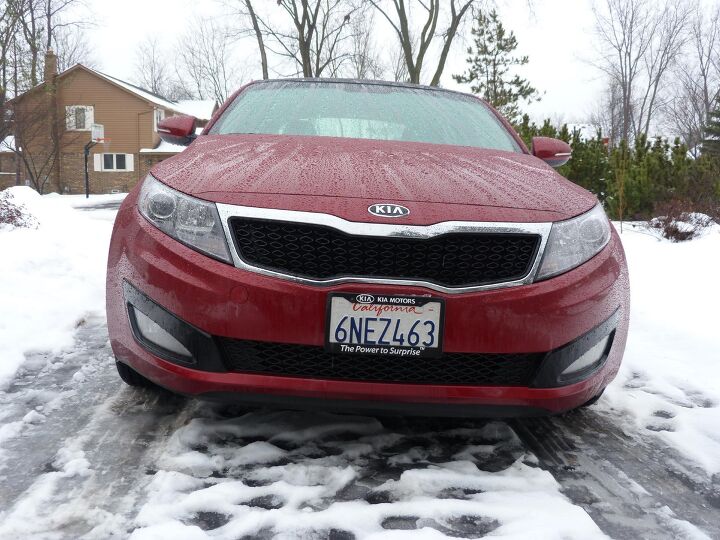



































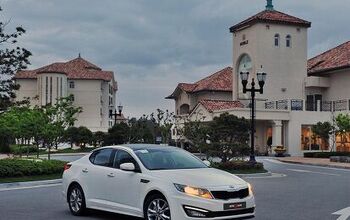
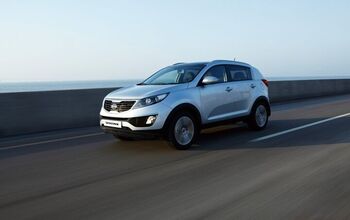
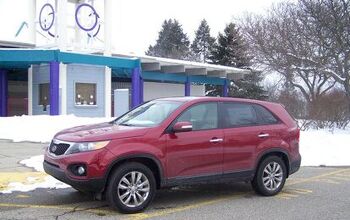
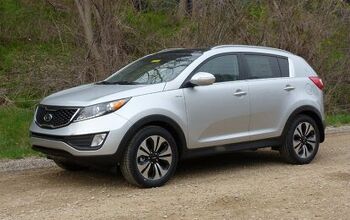










Comments
Join the conversation
I don't think I would judge a whole organization based upon the availability to distribute brochures for their (currently unavailable) product. Kia actually doesn't list a car on their website or even send out brochures to the dealers until they actually become widely available in the showrooms. That way the website truthfully represents what is available. You should expect to see the 2012 Optimas and brochures in the dealers before the end of the month.
I am surprised that no review is mentioning the annoying left pull a lot of Optima seem to have. Took the car to the dealer and they did an alignment but it acts the same. If you let go of the steering wheel for a couple seconds you’re on the shoulder. I heard that Sonata had a recall for the same thing, when will Kia issue one? Love the look and equipment for the money, but I think quality control is abysmal at Kia. My brand new Optima came with missing seat bolts, both driver and passenger seats were bolted down in ONE bolt out of four. I don’t even want to think what might have happened had I been involved in a collision before noticing this. Unacceptable! Think twice about buying a Kia.